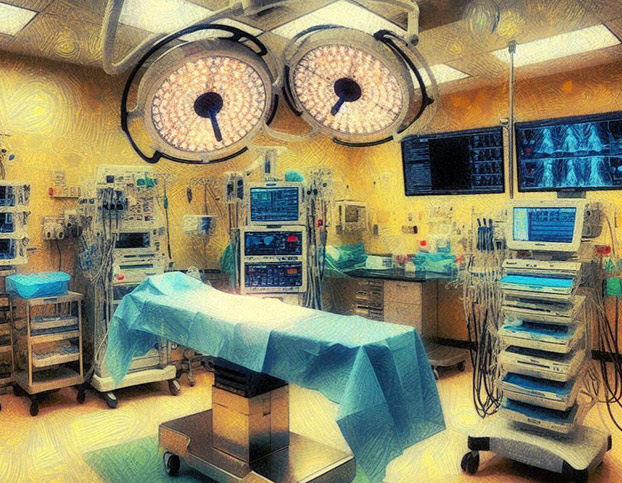Imagine your beloved male cat suddenly struggling to urinate, or worse, completely unable to go. It’s a terrifying situation, and sadly, one many cat owners face. This is often due to Feline Idiopathic Cystitis, or FIC, a frustrating and recurring problem. When simple treatments aren’t enough, you might have heard of a procedure called a perineal urethrostomy, or PU surgery.
Veterinary internists spend years learning how to manage complex medical conditions with medication and other non-surgical approaches. So, the thought of surgery, especially a major one like a PU, can be a bit daunting. We always ask ourselves, “Is there absolutely no other way?” And honestly, no surgical procedure causes more debate among internists than the PU.
Why the hesitation? Because while a PU can be life-saving for male cats with repeated urinary blockages, it’s not a simple fix. It dramatically alters your cat’s anatomy, and it doesn’t solve the underlying causes of FIC. It’s crucial to understand what the surgery does do – create a wider opening for urine to pass – but also what it doesn’t do – cure the underlying disease itself. Let’s take a closer look at what this procedure entails and why it requires such careful consideration.
What is Perineal Urethrostomy, or “PU” for Short?
Think of it this way: the urethra, which is the tube that carries urine from the bladder out of the body, is naturally quite narrow in male cats, especially at the tip of the penis. This narrowness makes it prone to blockages. A PU surgery creates a new, larger opening for urine to pass through.
This surgical procedure removes the narrowest part of the urethra, which is inside the penis. The wider part of the urethra, located closer to the body, is then sutured to the skin in the area between the anus and scrotum. This shortens the urethra and creates a much larger exit opening for urine, making it far less likely that blockages will occur in the future. In simple terms, it modifies the normal urethra and penis creating a wider doorway so that urine can flow out much more easily.
This surgical procedure removes the narrowest part of the urethra
In Which Situations Would This Surgery Be Performed?
Let’s be honest, no one wants their cat to have surgery. For veterinary internists, who treat illnesses with medicine, surgery is truly a “last resort.” We’d much rather find a way to help your cat feel better with medication, diet changes, or by making their environment less stressful. But sometimes, despite our best efforts, we reach a point where surgery becomes a viable option.
Think of it like this: your cat’s urinary tract is like a delicate system, and sometimes that system just keeps breaking down. Here’s when a PU might be the answer:
- Recurring, Life-Threatening Blockages: Imagine your cat having to go to the emergency vet over and over and over again, needing a catheter to unclog his urethra. It’s stressful for everyone, and it’s expensive. If this becomes a pattern, even with the best medical care, a PU can help prevent future blockages. It’s about breaking that cycle of emergencies.
- A Urethra That’s Too Narrow (Stricture): Sometimes, the urethra, the tube that carries urine, gets narrowed by scar tissue or inflammation. It’s like a garden hose getting kinked. This makes it really hard for your cat to pee, no matter what medicine we give. A PU can create a new, wider opening, solving the physical problem.
- When a Catheter Just Won’t Go In: In an emergency, when a cat can’t pee, we try to insert a catheter to clear the blockage. But sometimes, the blockage is too severe, or the urethra is too damaged. In those cases, a PU becomes an urgent necessity. It’s the only way to get the urine flowing again and save your cat’s life.
Ultimately, a PU is about giving your cat a chance at a better quality of life. It’s a big decision, and your vet will walk you through all the risks and benefits.
Why PU Surgery Gives Internists Pause
Internists may be hesitant to recommend perineal urethrostomy (PU) surgery primarily because it does not cure feline idiopathic cystitis (FIC). This is crucial to understand when discussing this surgery with your veterinarian. While the surgery may eliminate urinary blockages, the underlying disease, including inflammation, irritation, and discomfort, persists. Consequently, although your cat’s abnormal litter box habits may cease, they still experience discomfort but now can no longer tell you.
We frequently wish our pets could talk to us and tell us what’s wrong, but they do communicate through behavior. Understanding these signals is crucial. While PU surgery may prevent emergency trips due to urinary obstructions, it’s essential to recognize that your cat continues to have a chronic illness that requires ongoing management and this illness left untreated can significantly reduce their quality of life.
Other reasons that PU surgery may not be the right choice for your cat includes:
- Increased risk of urinary tract infections (UTIs): The altered anatomy can predispose cats to bacterial infections. Studies have shown a significant increase in the incidence of UTIs post-PU.
- Urethral stricture at the surgical site: Although the goal is to create a wider opening, scar tissue can still form, leading to strictures (narrowing) at the new urethral orifice, requiring additional surgery.
- Urine scalding/dermatitis: Due to the altered urine stream and proximity of the urethral opening to the skin, some cats may experience urine scalding on the skin near the new urethral opening.
In summary, A PU does not cure FIC. FIC is a complex condition often exacerbated by stress, and a PU does not address the underlying causes. Therefore, management of FIC requires a multimodal approach, including environmental enrichment, stress reduction, and dietary modifications, even if a PU has been performed. A PU is only addressing the physical obstruction issue, not the underlying inflammation, and without an ability to communicate this to you, your cat may suffer from ongoing inflammation and pain without you even knowing.
Contact Us
If you suspect your cat is experiencing a medical problem, such as a urinary tract infection or kidney disease, that is causing inappropriate urination, please contact us. We cat help restore your cat’s urinary health.

Author:
James Woods DVM, MS, DACVIM (SAIM)
Ph: (912) 721-6410
Contact Us
